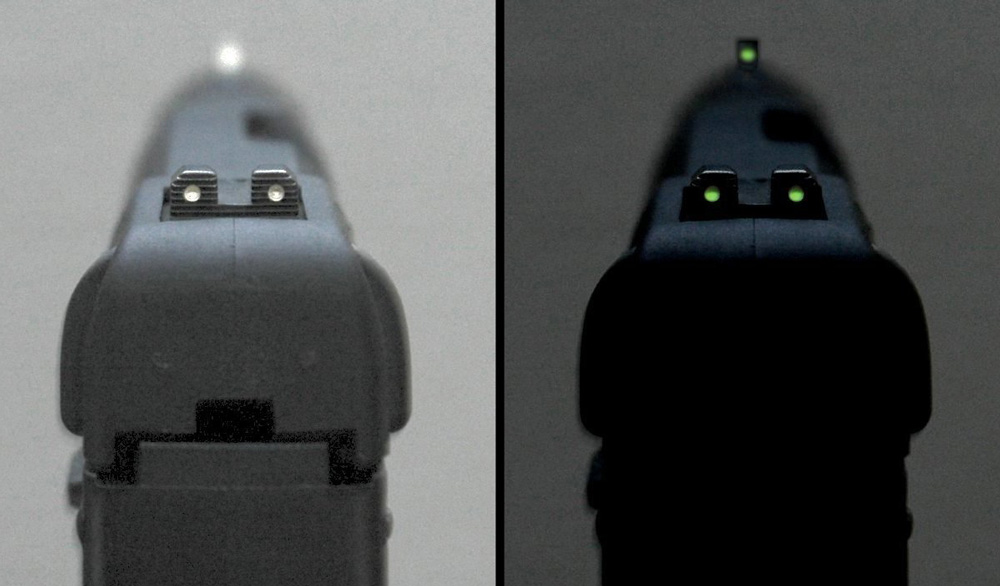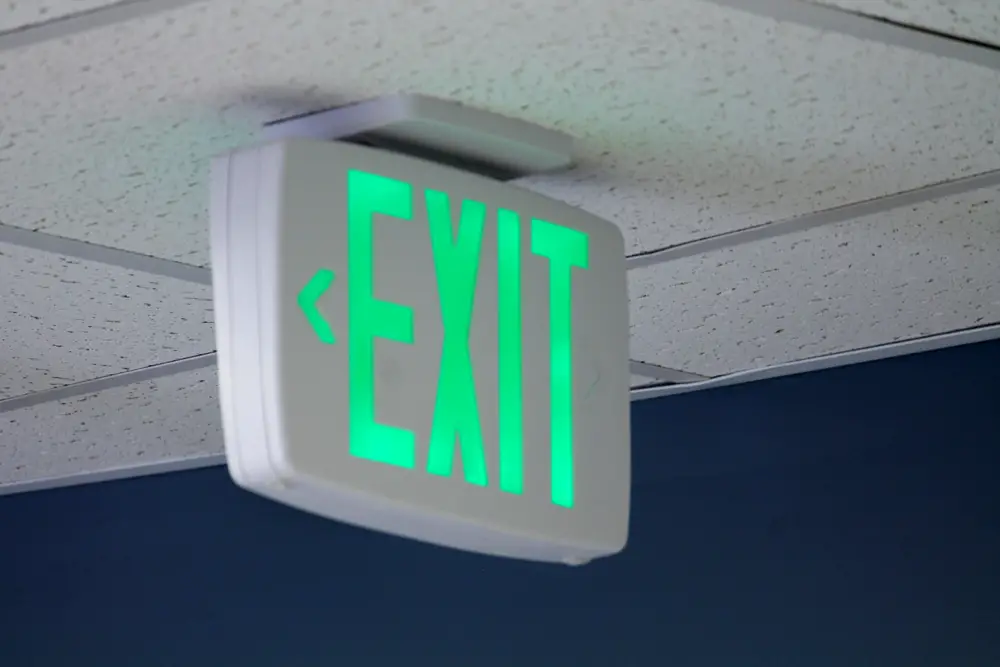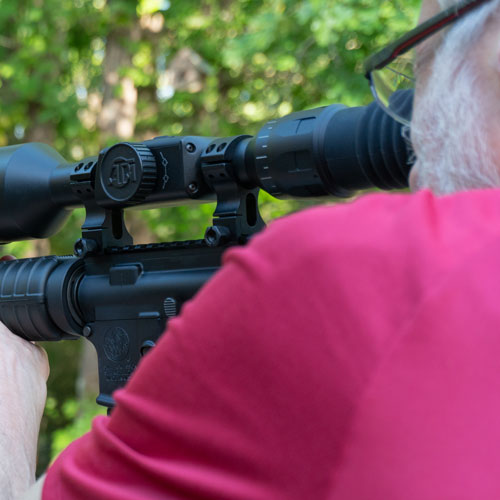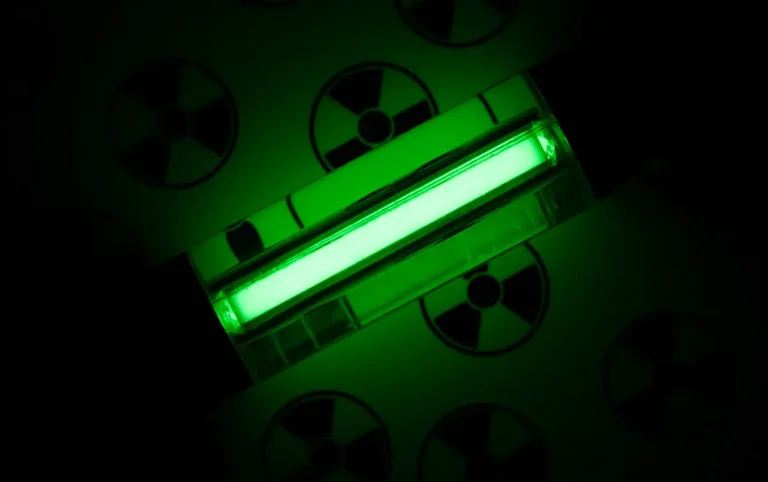We’re going to be looking at some options to get glow-in-the-dark sights on your gun. The main objective here is mostly to inform you and to dispel a few myths people have about the best glowing substance for the job at hand – tritium. We’ll first go over whether or not you can buy it in paint form, and from there a little science lesson in tritium, followed by options for using it for gun sights.
Can You Buy Tritium Paint?
No, you cannot buy tritium paint because tritium is typically a gas. Tritium is also radioactive and so must be handled properly. Because of this, it is best to purchase finished gun sight products instead of raw tritium.

You can absolutely buy glowing paint that’s safe to use on gun sights, household objects, and in some cases, even human skin. That paint is not, however, made of tritium. While such substances are often unregulated and thus can contain just about anything, most of them are simply water-based paint that contains something like silver-activated zinc sulfide. These paints do glow in the dark, but often require light to recharge them unlike Tritium which glows naturally. These paints will also typically scratch with use and will likely cease working fairly quickly when exposed to oxygen. This means that they’re likely not the best thing in the world when it comes to putting a permanent sight on your firearm.
We’d recommend these paints for arts and crafts projects, or, perhaps, some cool Halloween decorations. But, for a few reasons we’ll get into now unless you have access to a laboratory that is doing some really groundbreaking work, the paint you can buy does not, in any way, contain tritium as an active ingredient that would cause a glowing effect.
What is Tritium?
Tritium is a radioactive isotope of hydrogen that is a gas at room temperature and glows. That’s why you can’t find it in paint form. It is used in Exit signs and other applications that need to light up without electricity. Because tritium doesn’t require light to recharge it like some glow in the dark compounds, it is perfect for these sorts items and firearm sights.
It is perfectly safe when contained (as in a gun sight). It is a low energy beta emitter which means it is unable to get into our bodies through external means. You likely don’t want to ingest it internally as it can be a radiation hazard.

There’s some tritium naturally in the atmosphere, and a little bit is found in the waste from nuclear reactors. When combined with water, it creates “tritiated water” which is corrosive and dangerous to ingest. Typically, it’s made by bombarding some lithium with radiation, and the glow comes from the decaying processes therein.
Basically, then, Tritium is hydrogen that has too many neutrons, and thus we see a glowing effect as it decays. At room temperature, this will be a gas that, when captured, emits a green light visible to the eye. It is more or less safe, but we would not, in any way, recommend consuming it. As far as safety goes it’s like the radium on some glowing watches: it’s safe when it’s contained, but please don’t eat it.
How to Use Tritium?
Since it’s a stable gas at room temperature, the best way to use tritium is to contain it in a clear container that will trap it for an extended period of time and take advantage of the cool and handy glowing effect.
For use in the firearms realm, that means filling a tiny plastic tube full of tritium and capping off each end, before placing them into a front or rear gun sight, usually for a pistol. Making enough tritium to do this, however, and getting into the vials takes a pretty serious facility, and thus is best left up to the professionals.
The easiest way to use tritium is to either simply buy a pistol that has tritium in the sights (Many Sigs come with them now) or to buy a replacement set online. These will, as a rule of thumb, be generally more expensive than fiber-optic sights, and a fair bit more expensive than the glow-in-the-dark paint that we’d mentioned previously. Again, since it’s a gas at room temperature, the paint you see for sale online cannot, physically, contain tritium.
Basically, we think that the paint that you can buy is great to try night sights for a day or two, but it will likely wear out quickly once exposed to oxygen in the air. Contained tritium in a sight, however, is likely to last for years assuming there’s no damage to the small tubes in which it is contained, and, thus, it makes for a great night sighting option.

George has been an avid shooter for twenty years. He began shooting when he was gifted a Browning SA-22 for target practice. Now, as an academic, he combines his love of firearms and knowledge of history to write for firearms blogs and is still a frequent sight at the local range.


Tritium does NOT glow green, and Tritium’s glow can NOT be seen by the naked eye. Tritium’s beta decay emits electrons. In a sight or other device using tritium to make visible light, the device has a layer of phosphor, which is energized by the electrons from the tritium, and it’s the phosphor that glow visible green. This is similar to the way an old cathode ray TVs or florescent lights works.